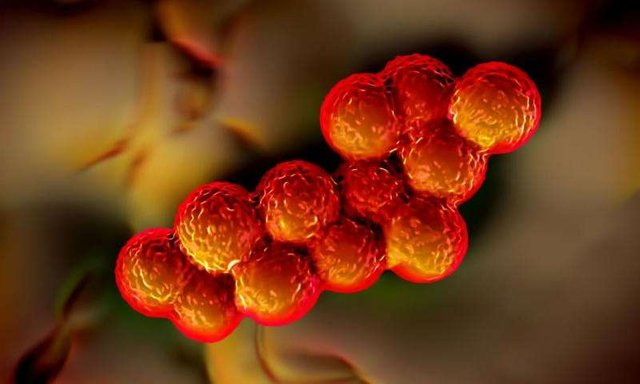Predatory Bacteria: Class of new Antibiotics
Hey Steemians, in my previous post I talked about antibiotic-resistant bacteria and problem which researchers are facing regarding it. Today I will talk about predatory bacteria.

Predatory bacteria are those which prey on other bacteria to complete their life cycle. It’s been more than eight decades have passed since Alexander Fleming’s discovery of a fungus that produces penicillin-a breakthrough that ultimately spawned today’s multibillion-dollar antibiotics. The bacteria have only one job description just adapt and evolve according to the environment so the problem of antibiotic resistance is still there. As a result of this situation researchers are looking to nature with renewed vigour to fight against infections.

This image shows Bdellovibrio bacteriovorus preys on other bacteria.
Bdellovibrio bacteriovorus and Micavibrio aeruginosavorus are small Gram-negative proteobacteria that are obligate predators of other Gram-negative bacteria.
The best-known predator bacteria is, Bdellovibrio bacteriovorus, is found in soil. It attacks prey bacteria by embedding itself between the host’s inner and outer cell membranes and begins to grow filaments and replicate. The host bacterium eventually explodes and releases more Bdellovibrio bacteriovorus into the environment.
Another example is Micavilbrio attaches to its prey from the outside and sucks the cells dry like vampire.

In the above image bacterium Micavibrio aeruginosavorus (yellow), leeching on a Pseudomonas aeruginosa bacterium (purple).
Dr Kadouri group has done a study on the rat to treat pneumonia using sublethal dose of Klebsiella pneumonia into the lungs of rats via intranasal inoculation and followed with multiple doses of predatory bacteria over 24 hours. The predatory bacteria were able to reduce pneumonia burden by more than 99.9% in the lungs of most rats and it was harmless to the rats. So this work showed that predatory bacteria can be used as a therapeutic, offering a possible solution to the rise of multidrug-resistant bacterial infections.(http://mbio.asm.org/content/7/6/e01847-16)
Violacein is a violet pigment extracted from the gram-negative bacterium Chromobacterium violaceum. It is also known as bisindole, a metabolite produced by bacteria by condensation of two tryptophan molecules. It is vibrant purple in color and it is anticancer, antifungal and antiviral in nature. A group of scientist has shown that it inhibits Plasmodium growth in vitro and in vivo. (http://aac.asm.org/content/53/5/2149.full).
Researchers have discovered that it can stop bacteria from reproducing, and even kill the multidrug resistant bacterium Staphylococcus aureus, when used in the right doses. It also works well in conjunction with other existing antibiotics.

Methicillin-resistant Staphylococcus aureus (MRSA) bacteria.

Some scientists are working on controlling the predator activity of Bdellovibrio bacteriovorus by using riboswitches, which are gene expression-controlling tools known to function well in other bacteria, to tackle the challenge of understanding and manipulating Bdellovibrio bacteriovorus predation. The one of the genes which is believed to be important to Bdellovibrio bacteriovorus predatory behaviour: flagellar sigma factor fliA. They then activated it with the chemical theophylline. After placing the modified bacteria into petri dishes together with some E.coli prey, the modified Bdellovibrio bacteriovorus seemed to multiply more quickly in presence of theophylline than in absence. (https://www.sciencedaily.com/releases/2017/10/171011100722.htm)
This research is a step in the direction of understanding how B. bacteriovorus can be used and controlled to attack specific bacteria that cause illness, while avoiding 'good' bacteria necessary for daily survival. This could help in further development of 'living antibiotics.'
Happy reading :)
Vinamra>
nice